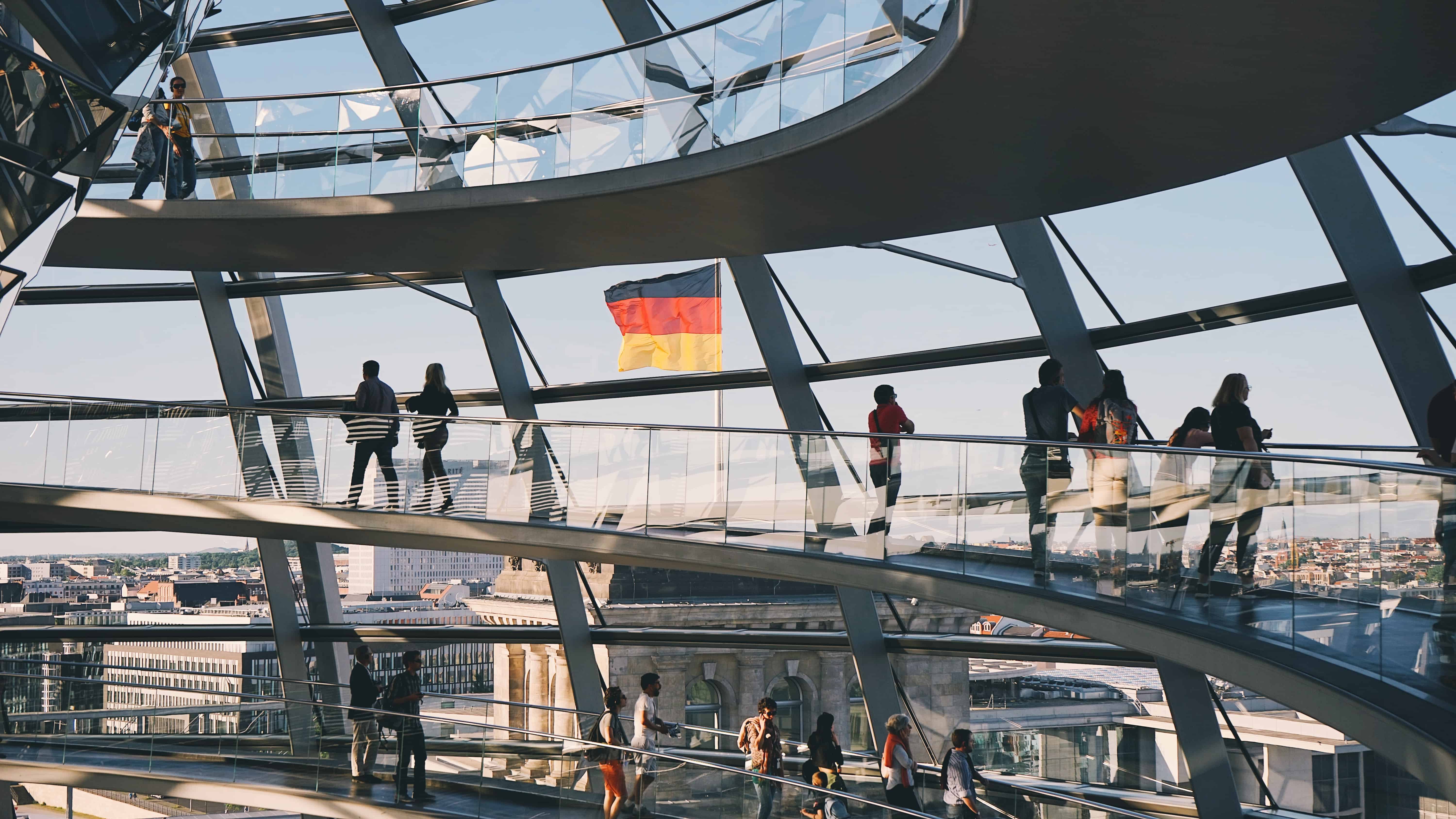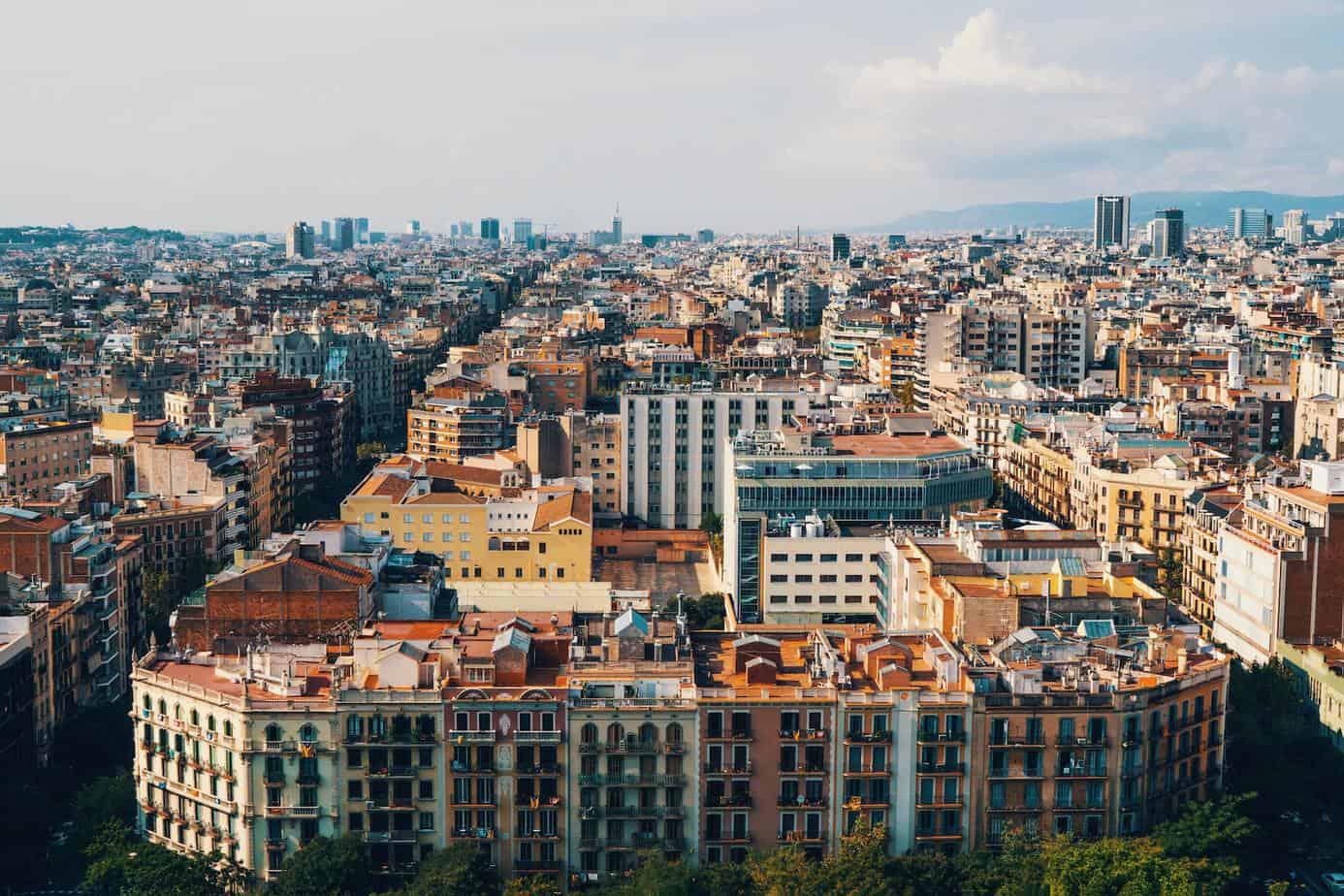Berlin, Germany apartments for rent
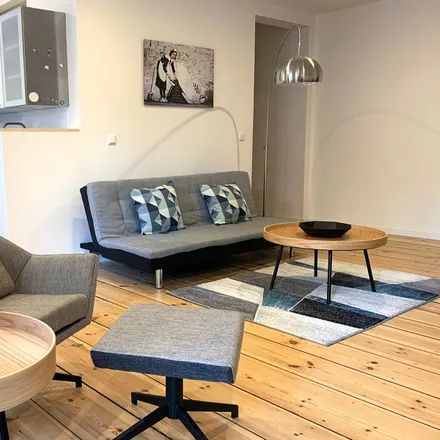
€1,490
Available: 01/09/2024
Listed: 08/05/2024
Yorckstraße 61, 10965 Berlin, Germany
Modern, newly renovated, and fully furnished studio apartment, centrally located in colorful Berlin Kreuzberg.Just a few minutes walk from two big parks and buzzing Bergmann Kiez, this lovely studio apartment is tucked away in the quiet side wing...
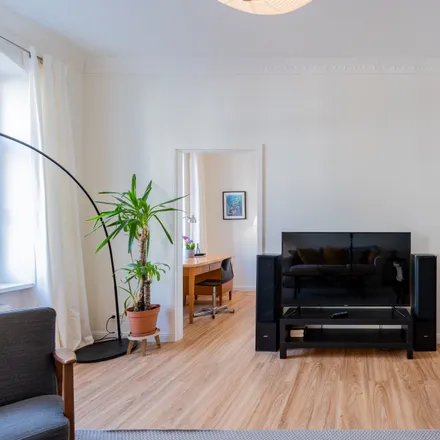
€2,800
Available: 06/05/2024
Listed: 06/05/2024
Morusstraße 28, 12053 Berlin, Germany
A 72m2 flat that has been freshly renovated and tastefully furnished, equipped with all the amenities required for a very enjoyable stay for business or pleasure. It is located on the second floor and is very bright, with sunlight entering one side o...
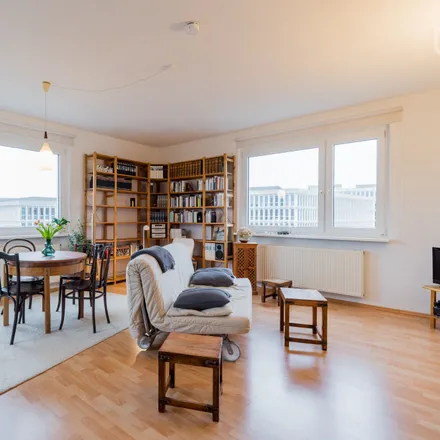
€1,580
Available: 01/01/2025
Listed: 08/05/2024
Alt-Moabit 138, 10557 Berlin, Germany
This one-bedroom apartment is centrally located in Berlin Mitte only minutes on foot from the Central Train Station (Hauptbahnhof) and a direct train ride from the new Berlin Brandenburg international airport. The spacious 62m2 (670 sq. ft) apart...
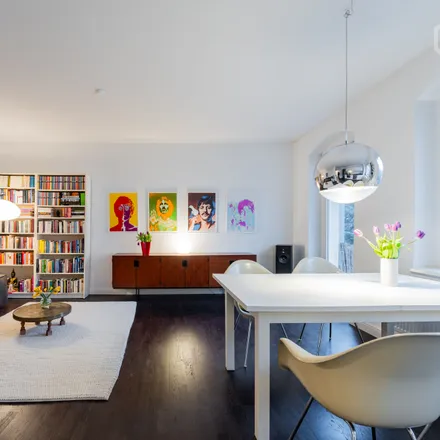
€2,490
Available: 11/10/2024
Listed: 05/05/2024
Sredzkistraße 24, 10435 Berlin, Germany
Welcome to this cozy and centrally located third-floor apartment in Prenzlauer Berg, just a stone's throw away from the popular and vibrant Kollwitzplatz. Enjoy an idyllic view of trees and gardens with the soothing sounds of bird chirping. Its s...

€2,901
Available: 09/05/2024
Listed: 09/05/2024
Kurfürstenstraße 43, 10785 Berlin, Germany
Apartment Show up and start living from day one in Berlin with this two bedroom apartment. You’ll love coming home to this thoughtfully furnished, beautifully designed, and fully-equipped Mitte home . (ID #BER89)Gorgeous furniture, f...
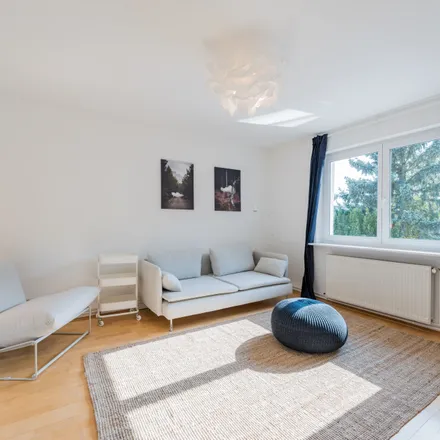
€2,890
Available: 01/09/2024
Listed: 08/05/2024
Blumenthalstraße 63, 13156 Berlin, Germany
Welcome to this exquisitely designed Scandinavian-inspired home that effortlessly blends functionality, elegance, and comfort. Situated in the quiet area of district Pankow, surrounded by nature and a green area, this home offers a serene and peacefu...
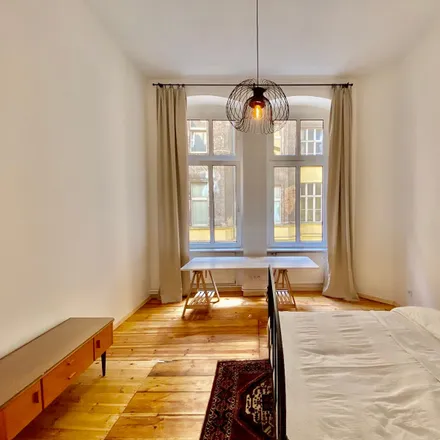
€1,950
Available: 01/10/2024
Listed: 08/05/2024
Hagelberger Straße 46, 10965 Berlin, Germany
The apartment is light, fully furnished and has everything you need including Internet, towels, beddings and kitchen utensils. The living room holds a nice gallery to use as 3rd room, storage or relaxing area. It is perfect if ypure looking for a sho...
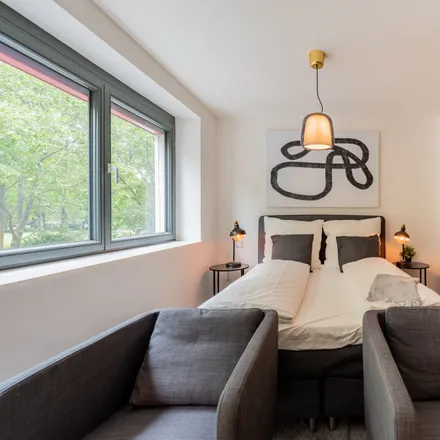
€1,799
Available: 02/07/2024
Listed: 05/05/2024
Mariannenplatz 21, 10997 Berlin, Germany
360 degree virtual tour: Elegant Apartment at Mariannenplatz in KreuzbergIn the midst of vibrant Kreuzberg, right at the historically significant Mariannenplatz, an exclusive 30sqm apartment awaits you, leaving nothing to be desired. The apar...
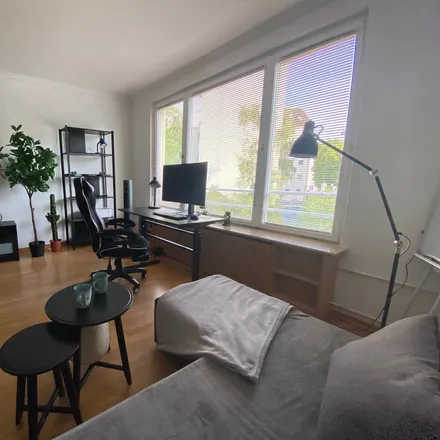
€1,850
Available: 08/05/2024
Listed: 08/05/2024
Rauchstraße 8, 13587 Berlin, Germany
It's a one-room apartment with a size of 45 m2. It is located near the Havel Sea in Berlin and some lovely bridges (~ 450 meters distance). This place is proper for working, relaxing, hiking, and kayaking. There are various restaurants and cafes next...
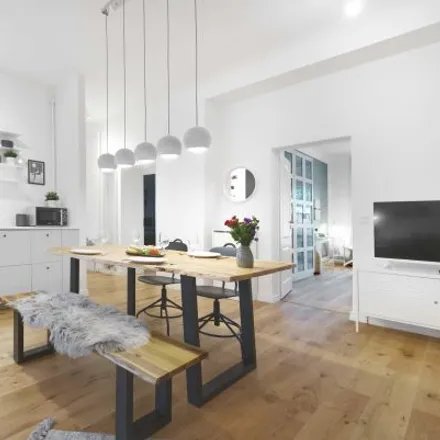
€3,103
Available: 01/06/2024
Listed: 09/05/2024
Wikinger-Spielplatz, Norwegerstraße, 10439 Berlin, Germany
Apartment The bright and high-quality furnished 3-bedroom apartment with 2 comfortable Kingsize Boxspring beds is quietly located on the courtyard. The bathroom is equipped with a large shower and the living and dining area has a large, ...
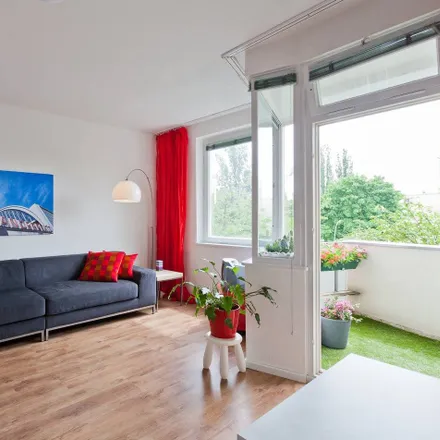
€1,085
Available: 02/09/2027
Listed: 08/05/2024
Loewenhardtdamm 36, 12101 Berlin, Germany
A comfortable and bright apartment with private balcony in Kreuzberg, the centre of Berlin.The apartment has a spacious and sunny living room/bedroom with a balcony facing south, a charming kitchen and a bright bathroom with tub.In the apartm...
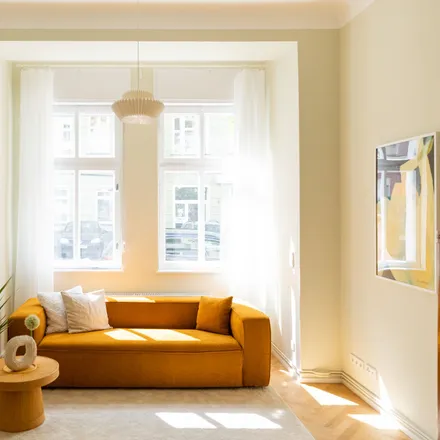
€1,850
Available: 08/09/2024
Listed: 08/05/2024
Driesener Straße 3, 10439 Berlin, Germany
First-time occupancy of a completely newly renovated and modernised stylish 2-room front building old building flat in a top location in Driesener Straße in Prenzlauer Berg. This beautiful flat is suitable for a single person or a couple. The bed...
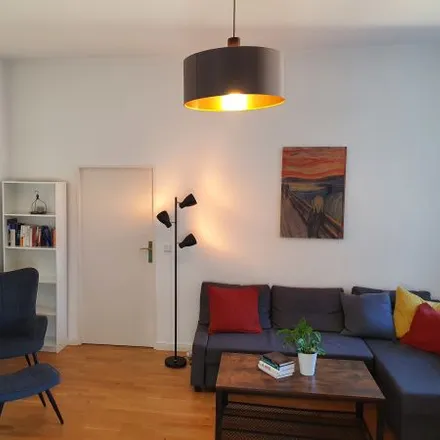
€2,590
Available: 20/06/2024
Listed: 09/05/2024
Cheruskerstraße 26, 10829 Berlin, Germany
Apartment This 85 square meter and furnished bright Berlin old building apartment with three rooms and balcony invites you to linger with its charm. In addition to the three rooms, the balcony apartment has a kitchen with a new and high-...
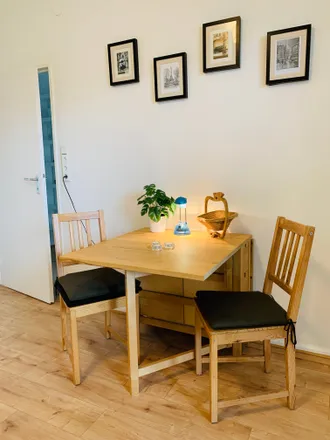
€820
Available: 02/05/2025
Listed: 08/05/2024
Schulenburgstraße 14, 13597 Berlin, Germany
The ApartmentJanuary 23 fresh renovated flat with new furnishings and new fully equipped kitchenmodern furnishedhuge balconyWindow blindsInternet: Vodafone CableMax1000 Red, Download up to 1000MBit/s and Upload up to 50MBit/sa...
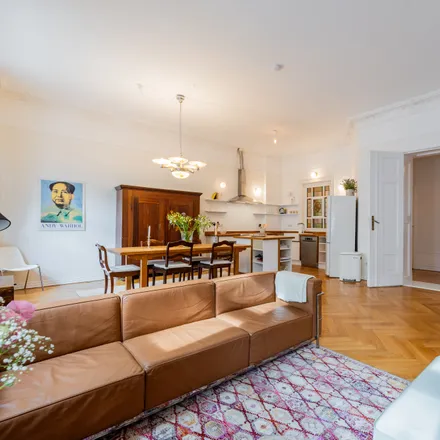
€3,200
Available: 01/02/2025
Listed: 08/05/2024
Haubachstraße 18, 10585 Berlin, Germany
This wonderful and spacious ground-floor apartment in a recently refurbished 1920-Building is very conveniently located in the heart of Charlottenburg, not far from the Deutsche Oper and the Schloss Charlottenburg. Public transport and all kinds of s...
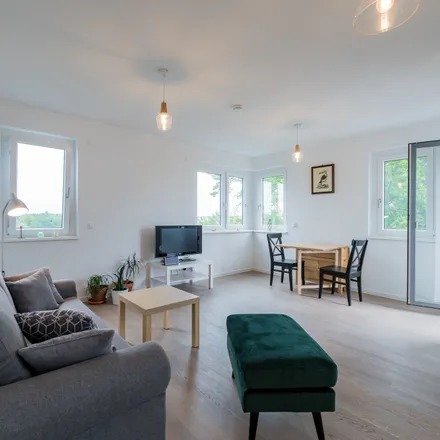
€1,950
Available: 01/07/2024
Listed: 07/05/2024
Prenzlauer Promenade 49G, 13089 Berlin, Germany
Located in the south of the popular Berlin district of Pankow, you can reach the trendy district of Prenzlauer Berg in five minutes by bike. The nearby tramway (Am Steinberg) takes you to Alexanderplatz 24/7 in a quarter of an hour. Numerous shopping...
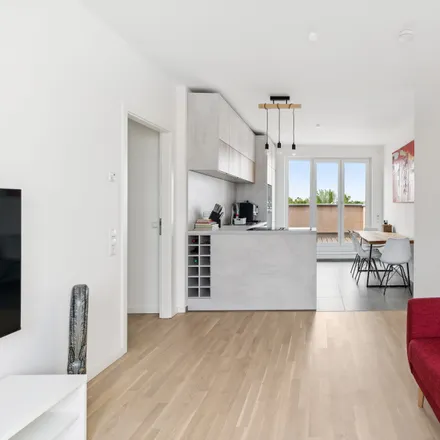
€2,190
Available: 26/01/2025
Listed: 08/05/2024
Georg-Klingenberg-Straße 6, 10318 Berlin, Germany
This wonderful space awaits you in a brand-new building, promising an experience like no other. Prepare to be mesmerized by the miraculous charm of this unique dwelling.As you step inside, you are welcomed by an inviting entry hall, setting the s...
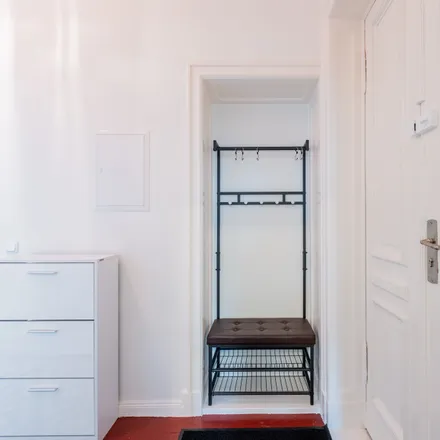
€1,890
Available: 15/11/2024
Listed: 06/05/2024
Heinz-Galinski-Straße 8, 13347 Berlin, Germany
The fully furnished, freshly renovated and lovingly furnished 3-room apartment in Wedding is 73 square meters and very comfortable for two people.It is located on the first floor of a beautiful old Berlin building and is bright and spacious with ...
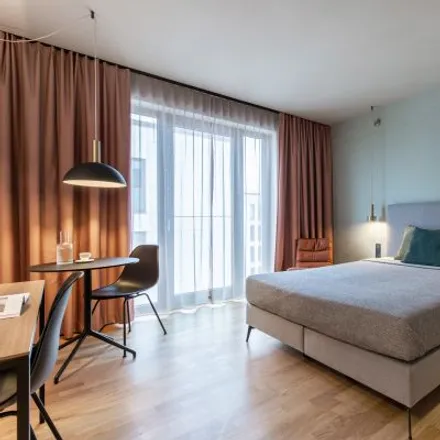
€1,431
Available: 27/05/2024
Listed: 09/05/2024
the Unique, Am Flughafen 13, 12529 Schönefeld, Germany
Apartment Fully equipped and furnished design serviced apartments. More space, even for two: The Smart apartment has everything you could want for a longer and comfortable stay. Thanks to the clever layout of the fully equipped a...
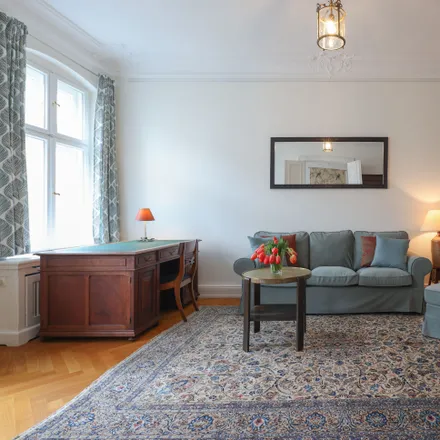
€2,490
Available: 05/05/2024
Listed: 05/05/2024
Sesenheimer Straße 15, 10627 Berlin, Germany
The spacious and bright stucco apartment is on the 3rd floor of the very well-maintained building, which was last renovated in 2021. From the hallway you reach the spacious dining room for 10 people and right next to it the spacious living room w...
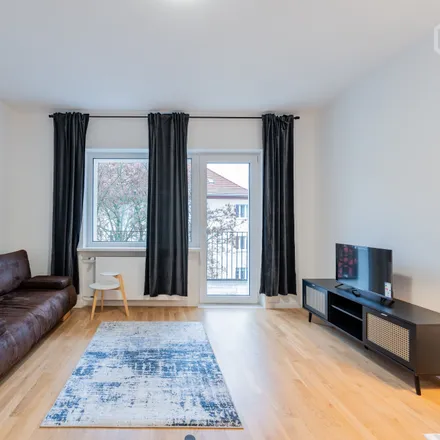
€1,690
Available: 01/08/2024
Listed: 06/05/2024
Horst-Kohl-Straße 17, 12157 Berlin, Germany
/// This apartment has been personally verified and is managed directly by the wunderflats plus team ///Experience the perfect blend of comfort and convenience in this beautifully presented 1-bedroom apartment, situated in the serene and g...
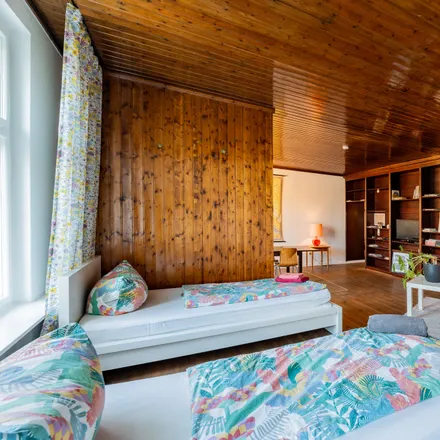
€2,100
Available: 02/11/2024
Listed: 08/05/2024
Platform, Birkenstraße 44, 10551 Berlin, Germany
1 bedroom 1 living roomFully equipped kitchenmodern bathroom1 balcony 82 qm4th floor, Lift -------------------This apartment impresses not only with its spacious room layout, but also with its excellent location. It is...
Apartments for Rent in Berlin
Berlin is a sprawling busy capital, and it can be challenging to navigate around it when you first come to the city. The fact is, Berlin is divided into 12 different administrative boroughs. Those boroughs, or Bezirke, are further subdivided down into Kiez — which basically means neighborhood. Even within the Kiez, areas are further split into small areas like Kollwitzkiez and Bergmannkiez — each with their individual charisma. Hence each little neighborhood and street has its unique character — and rental price. Central parts of Mitte are very pricey. Similarly, popular locations like Kollwitzplatz in Prenzlauer Berg and Schlesisches Tor in Kreuzberg are not among the most affordable. Nevertheless, there are plenty of budget-friendly places for long-term renting like Wedding and Friedrichshain. There is a place for everyone in Berlin.
What is the Average Rent for Berlin, Germany Apartments?
The average rent for apartment in Berlin, Germany: €1,933
(+24.7%)
| Month | Median Price |
|---|---|
| Apr 2024 |
€1,664
|
| Mar 2024 |
€1,483
|
| Feb 2024 |
€1,483
|
| Jan 2024 |
€1,483
|
| Dec 2023 |
€1,472
|
| Nov 2023 |
€1,537
|
| Month | Median Price |
|---|---|
| Apr 2024 |
€1,933
|
| Mar 2024 |
€1,550
|
| Feb 2024 |
€1,550
|
| Jan 2024 |
€1,550
|
| Dec 2023 |
€1,537
|
| Nov 2023 |
€1,720
|
Be informed and make custom offers based on median rent prices. However, keep in mind that the price may vary depending on the size and amenities of the apartments for rent.
Renter's FAQ About Berlin, Germany
-
Is it better to buy or rent an apartment in Berlin?
Whether it is better to buy or rent an apartment in Berlin depends on your circumstances and preferences. Generally, buying offers long-term stability and potential investment gains, while renting provides flexibility and avoids the responsibilities of homeownership. In Berlin, where the housing market has experienced significant price increases in recent years, renting might be a more feasible option for those who are not ready to commit to a long-term investment or lack the financial means for a down payment.
-
Is rent cheap in Berlin?
Berlin's rental prices have historically been relatively affordable compared to other major European cities. However, the affordability of rent in Berlin has been changing in recent years due to increased demand and limited housing supply. While it is still generally considered more affordable than cities like Paris or London, the market has become tighter, and rental prices have risen, especially in popular neighborhoods.
-
Is it easy to rent an apartment in Berlin?
Renting an apartment in Berlin can be a competitive process due to the high demand and limited housing availability. Finding a suitable apartment, especially in desirable areas, can be challenging. The process typically involves providing required documents such as proof of income, references, and sometimes a deposit. Using online platforms dedicated to rentals, such as Rentberry, can facilitate the search process. What’s more, persistence, flexibility, and having the necessary documentation ready can increase the chances of securing a rental apartment in Berlin.
-
What is the average rent of an apartment in Berlin?
The average rent of an apartment in Berlin varies depending on factors such as location, size, and the place's condition. Since the rental market here changes and develops quickly, we recommend checking current market trends to have the most accurate and up-to-date information on average rent in Berlin. On Rentberry, it’s our priority to provide tenants with all the means to assist them in making informed decisions, so you can always head to our pricing statistics to see how much an apartment in Berlin is.
-
Can foreigners rent in Berlin?
Yes, foreigners can rent apartments in Berlin. Germany has generally welcoming policies towards foreign residents, and renting is open to both German citizens and non-citizens alike. However, non-EU citizens may need to comply with additional legal requirements, such as obtaining a valid visa or residence permit. If you’re a foreigner, prioritize learning about and understanding necessary documentation and legal procedures before entering into a rental agreement.
Learn More About Renting in Berlin, Germany
What to Know About Renting in Berlin?
Recently, Berlin has become the heart of European creative industries with a developed startup infrastructure and legendary underground culture full of avant-garde artists, musicians, and designers. Its unique atmosphere and countless possibilities in various spheres the city offers to attract many renters both from inside the county and abroad. Here are a few things you should know if you’re planning to rent a property in Berlin: 1. Rental market: The rental market in Berlin is highly competitive, with a high demand for affordable apartments. As a result, finding suitable accommodation is challenging, especially in popular neighborhoods. You should be prepared to spend some time searching for a suitable property and be ready to act quickly when you find something that meets your needs. 2. Tenant associations: Berlin is considered to be a renter-friendly city, with 85% of residents renting their homes. Nevertheless, recent inflation, price increases, and the growing popularity of certain neighborhoods have brought some turmoil to the market. It might be a good idea to join a tenant association in Berlin to protect your rights as a renter and receive legal support, advocacy, and advice. In some cases, they can help you negotiate rent increases or review your lease agreement. 3. Neighborhoods: Berlin is a diverse and multicultural city, and each neighborhood has its own unique character. Consider your lifestyle and preferences when choosing a location. For example, if you're looking for lively nightlife, take a look at neighborhoods like Kreuzberg or Friedrichshain. If you prefer a quieter, more residential area, Prenzlauer Berg or Charlottenburg might be more suitable. 4. Public transportation: Berlin has an excellent public transportation system, including buses, trams, and a subway system (U-Bahn). As a renter, keep in mind the proximity of public transportation when choosing a neighborhood to live in. 5. Rental costs: Rental costs in Berlin can vary widely depending on the property's location, size, and condition. It's worth noting that rental prices have been rising in recent years, so be prepared for potential increases. Scroll down to see the most recent statistics regarding the rent in Belin.

Business and Employment
As a large international business hub, Berlin provides ideal conditions for various enterprises and investors, such as superb infrastructure, an advanced telecommunications sector, and many qualified professionals. As a renter, you can benefit from Berlin's bustling job market, which provides a stable source of income to cover your living expenses. The city's minimum wage is €12.00 per hour, which is higher than the national average. Berlin is considered to be one of the most innovative cities in the European Union, and it holds a leading position in many key industries. The city is also a startup capital that dictates trends in new technologies. Berlin has fundamental expertise in IT, media and communications, electronics, optics technology, and strong competence in natural sciences. Overall, Berlin's thriving business and employment scene offer plenty of opportunities for renters to build their careers and enjoy the city's cultural diversity.

Outdoors
Berlin fosters a relaxed and slow way of living with lots of parks and open spaces to enjoy the outdoors. The capital of Germany is thought to be one of the greenest cities in Europe; it is strewn with lakes, sprawling lawns, and even the Grunewald forest on the outskirts of the city. During the warm season, life in Berlin shifts outside — to the terraces of countless cafés, open air theatres, and movie nights in parks. These events and activities are perfect for indulging in the sunshine and enjoying mellow summer nights. Berlin and its outdoors offer a diverse range of experiences and opportunities for renters to explore and enjoy the natural beauty of the city.

Transportation
Berlin has a complex transport infrastructure and offers its renters very diverse ways of getting around the city. The city's public transportation system consists of separate networks, with five different light and heavy rail systems. That includes the S-Bahn and U-Bahn rail systems, regional rail infrastructure, a tram and bus network, and a couple of ferry services. As a renter in Berlin, you have access to a reliable and extensive transportation system that can take you anywhere within the city and beyond. With a variety of ticket options available, you can choose the one that suits your needs best.
How to Rent a Property in Berlin?
- - To rent an apartment in Berlin, you should prepare the following documents: a passport copy, work contract, proof of income (such as bank statements or invoices from your employer), SCHUFA record (your credit score in Germany), and Mietschuldenfreiheitsbescheinigung (a statement from your previous landlord, proving that you don’t have outstanding debt).
- - Before looking for a property, you should know that kaltmiete means that the rent comes without utilities included, and warmmiete means that the price will cover utilities.
- - If you’re a foreigner and come to Berlin for longer than 3 months, you have to register your address — get an Anmeldung. Read all about it here.
- - No matter where you rent, knowing your rights and responsibilities is important. Learn more about tenant rights in Germany in our article.
- - The rental market in Berlin is highly competitive, so keep an eye on new listings, try to reach out to landlords straight away, and have all your paperwork ready.
Best Neighbourhoods to Rent in Berlin
Mitte
Mitte means "middle" in German, and the district is named this way primarily due to its central location. It is a paradise for tourists and a mandatory stop for anybody who visits Berlin, as Mitte is packed with all major must-see sights from the Reichstag to the Brandenburg Gate. Nevertheless, it’s not the best idea to live in central Mitte if you are on a shoestring budget. It is a fundamental tourist hub, and consequently, hotels and apartments for rent can be quite costly. Central Mitte used to be the heart of East Berlin and has a lot of places of historical interest beyond monuments. Although, in our time, it also boasts a plethora of chic shops, eateries, and tacky boutiques.
Prenzlauer Berg
This is another popular area for tourists and residents of the city, which is a part of the Pankow borough. Prenzlauer Berg finds itself among the most famous neighborhoods of Berlin for a reason. This area remained relatively untouched during the Second World War, and many of its elegant old buildings stayed intact. Swift gentrification has transformed Prenzlauer Berg from a neglected and shabby district to one of the wealthiest areas in Berlin, full of artisanal shops and breweries. This area is also a popular spot for young families with kids — you can frequently see them with strollers visiting numerous organic ice-cream shops, kids’ cafes, and playgrounds, especially around Kollwitzplatz and Kastanienallee.
Friedrichshain
Friedrichshain used to be a separate borough, but now it’s a part of a combined borough of Friedrichshain-Kreuzberg. Nevertheless, this waterfront Kiez preserved its unique character and personality. Friedrichshain is a former industrial area, which was converted into a countercultural harbor. Everything here screams freedom, from modern art galleries to colorful graffiti on all possible surfaces. This area boasts some of the best nightlife spots in the city — unconventional clubs hidden beneath the S-Bahn or behind the unmarked doors. Some years ago, Berlin went through a wave of squatters who occupied numerous abandoned buildings around the city. Now, there are only a few places left, predominantly in Friedrichshain, which masterfully intertwines the past with the present. Rental prices in this area are generally low, and here you can find affordable apartments, rooms, and lofts.
Kreuzberg
Like many of Berlin's hip neighborhoods, Kreuzberg used to be a place for immigrants, then artists, squatters, and students. Now, it is being taken over by developers who rapidly renovate it for a much richer crowd. Thanks to this process, modern Kreuzberg is an eclectic blend of Bohemian lifestyle and counterculture vibe. This area is multicultural and diverse, with a great variety of cafes serving dishes from all over the world and experimental restaurants. Kreuzberg also has wonderful lush parks and vibrant nightlife, so both outdoor lovers and party animals will be happy here. The rental prices for apartments are pretty high here but still manageable.
Charlottenburg
Charlottenburg-Wilmersdorf is considered an elegant and posh part of Berlin —it is much cleaner and neater than other boroughs of the city. This area is civilized and tranquil, which makes it perfect for older people and upscale families. Additionally, it has some of the best Asian restaurants in Berlin and hosts the Karl-August-Platz weekly market. In this borough, you can enjoy the Charlottenburg Palace, a museum with the works of Picasso, the Berlin Zoological Zoo, and diverse shopping options.
Wedding
Despite its central location, just north of central Mitte, Wedding has an entirely different vibe. Here you can find a lot of cheap apartments and rooms for rent in luxurious historical buildings. The district is slowly getting out of stagnation and undergoing gradual gentrification. As a result, it attracts many Western expats and young Germans. This neighborhood is one of the most diverse in Berlin, with around 30% of the population being immigrants. Settle here if you want to be surrounded by people from all over the world and small businesses which they open: from little cozy grocery stores to cafes with the best international cuisines.
